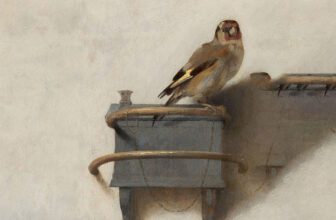
The Story Behind the Portrait of Adele Bloch-Bauer I
The “Portrait of Adele Bloch-Bauer I,” also known as “The Woman in Gold,” is one of the most famous and revered paintings by the Austrian symbolist artist Gustav Klimt. This dazzling masterpiece is celebrated not only for its opulent gold-leaf detailing and mesmerizing beauty but also for the incredible history and controversy surrounding it. From its creation as a commission by a wealthy patron to its confiscation by the Nazis and eventual restitution, the portrait remains a symbol of artistic grandeur and justice.
Who Was Adele Bloch-Bauer?
Adele Bloch-Bauer was a Viennese socialite and the wife of Ferdinand Bloch-Bauer, a wealthy Jewish industrialist and patron of the arts. Born in 1881 into an affluent banking family, Adele was known for her intellect, charm, and cultural sophistication. She held salons at her home, attracting leading figures of Vienna’s intellectual and artistic scene, including Gustav Klimt himself.
Adele was one of the few women Klimt painted more than once, and their relationship has been the subject of much speculation. Some believe she was his muse, inspiring some of his most breathtaking works, while others suggest that they may have shared a romantic connection. Regardless of the nature of their relationship, the portrait he created immortalized her in a way few other women of her time experienced.
The Creation of the Portrait
In 1903, Ferdinand Bloch-Bauer commissioned Klimt to paint a portrait of his wife. The work took nearly four years to complete, finally emerging in 1907 as a spectacular blend of gold, silver, and oil on canvas. The portrait showcases Adele adorned in a golden robe covered in intricate patterns inspired by Byzantine mosaics, evoking both majesty and sensuality.
Klimt was deeply influenced by the Art Nouveau movement and the decorative aesthetics of the Vienna Secession. The painting exemplifies his “Golden Phase,” a period during which he extensively used gold leaf in his works, a technique he developed after being inspired by his travels to Ravenna, Italy, where he admired the golden mosaics in the Church of San Vitale.
The painting is a remarkable fusion of realism and abstraction. Adele’s face and hands are rendered with meticulous realism, exuding warmth and life, while her body and attire dissolve into a shimmering, otherworldly golden tapestry. Her direct gaze conveys a mysterious aura, inviting the viewer into her enigmatic world.
The Fate of the Portrait During World War II
After Adele’s premature death in 1925, she left a will requesting that the portrait be donated to the Austrian State Gallery. However, since the painting legally belonged to her husband, Ferdinand, it remained in his possession.
In 1938, when Nazi Germany annexed Austria, Ferdinand, being Jewish, was forced to flee Vienna, leaving behind his extensive art collection. The Nazis seized his property, and the portrait was renamed “Golden Lady,” becoming part of the collection of the Austrian Gallery Belvedere. For decades, it was displayed as a national treasure, celebrated as one of Klimt’s most significant works.
The Fight for Restitution and Maria Altmann’s Legal Battle
Following Ferdinand’s death in 1945, his estate was left to his heirs, including his niece, Maria Altmann. After the war, she sought to reclaim her family’s stolen art, but Austria was reluctant to return such a valuable masterpiece.
In the late 1990s, Maria Altmann, then an elderly woman living in the United States, initiated a legal battle against the Austrian government. The case became an international symbol of the fight for art restitution. In 2004, the U.S. Supreme Court ruled in her favor, allowing her lawsuit to proceed. Eventually, in 2006, an arbitration panel in Austria awarded the portrait and four other Klimt paintings to Altmann and her family.
The case gained widespread attention and was later dramatized in the 2015 film Woman in Gold, starring Helen Mirren as Maria Altmann and Ryan Reynolds as her lawyer, Randol Schoenberg. The film brought renewed awareness to the struggles of Holocaust survivors seeking restitution for stolen property.
How Much Is the Portrait of Adele Bloch-Bauer I Worth?
After winning the legal battle, Maria Altmann decided to sell the painting to ensure it would be publicly displayed rather than locked away in private collections. In 2006, American businessman and philanthropist Ronald Lauder, the co-founder of the Neue Galerie in New York, purchased the painting for a staggering $135 million. At the time, it was the most expensive painting ever sold.
Today, the painting’s value is estimated to have increased significantly, as Klimt’s works continue to be in high demand. If sold again, experts believe it could fetch well over $200 million, making it one of the most valuable artworks in history.
Portrait of Adele Bloch-Bauer I: Dimensions and Location
The painting measures 138 cm × 138 cm (54 in × 54 in), making it a large-scale and imposing portrait. Its square format enhances the impact of Klimt’s intricate design, drawing the viewer into Adele’s mesmerizing presence.
Since its acquisition by Ronald Lauder, the painting has been housed at the Neue Galerie in New York City, where it remains on permanent display. The museum, dedicated to early 20th-century German and Austrian art, provides an appropriate setting for this iconic work, allowing visitors from around the world to appreciate its beauty and history.
Legacy and Cultural Impact
The “Portrait of Adele Bloch-Bauer I” is more than just a painting, it is a testament to artistic genius, a story of loss and restitution, and a symbol of perseverance. It represents:
- Gustav Klimt’s artistic brilliance, showcasing his mastery of gold leaf and decorative patterns.
- Adele Bloch-Bauer’s enduring presence, making her an immortal icon of Vienna’s golden age.
- The tragic history of Jewish families in Austria, whose properties and cultural heritage were looted during the Nazi era.
- The ongoing importance of art restitution, highlighting the legal and ethical battles to return stolen artworks to their rightful owners.
Even today, the painting continues to inspire artists, historians, and audiences alike. It has been referenced in fashion, literature, and popular culture, cementing its status as one of the most significant paintings of the 20th century.
The “Portrait of Adele Bloch-Bauer I” remains a symbol of beauty, resilience, and justice. From its creation as a tribute to a remarkable woman to its tumultuous journey through history, its story is one of love, tragedy, and triumph. Thanks to Maria Altmann’s relentless pursuit of justice, this extraordinary painting is now displayed for the world to see, ensuring that both Adele and Klimt’s artistic legacy will never be forgotten.




